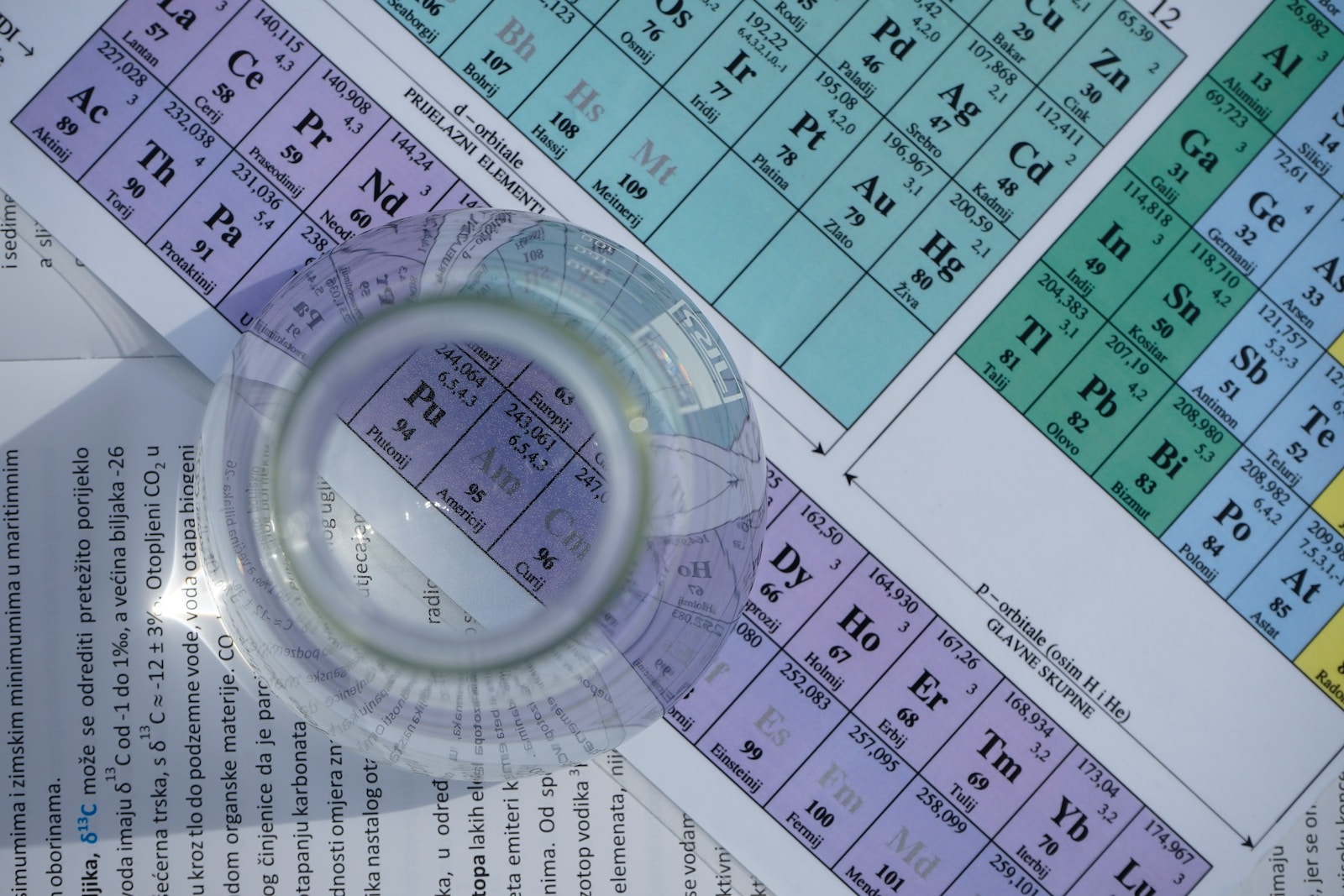Table of Contents
ToggleIntroduction
‘Forever chemicals,’ or PFAS, are man-made substances that are known for their persistent ability to remain in nature and the body for years. They have been linked to serious health effects, including infertility, high blood pressure, and some cancers. As PFAS are found in many consumer products, it’s hard to avoid them completely. However, experts suggest a few smart ways to minimize your exposure to these chemicals, particularly in the foods you eat.
Cut Back on Fast Food (and Greasy Wrappers)
Grease-resistant fast-food packagings, such as paper wrappers, boxes, and other containers used to serve burgers, fries, and salads, often contain oil-resistant PFAS. The contact time between the food and the packaging is critical to your risk of exposure. Therefore, switching to fresh foods that don’t spend as much time on the shelf can reduce your risk of exposure.
Avoid Nonstick Cookware
Nonstick pots and pans are often coated in a material with PFAS. Try using ceramic, stainless steel, or cast-iron pans instead. Not only will this protect you from PFAS exposure, but it will also positively impact the environment.
Store Leftovers in Glass Containers
Experts recommend storing leftovers and other food in glass containers, not plastic, in the fridge. This simple switch can help reduce your risk of exposure to PFAS.
Drink Filtered or Bottled Water
Carbon filters on faucets or in water pitchers can reduce the levels of PFAS in water, as can reverse osmosis systems installed under sink faucets. Check the results of water testing in your area and consider adding a water filtration system at home. Bottled water is also considered safe from PFAS contamination, but be sure to read labels carefully.
Be Cautious with Fish Consumption
PFAS have been widely detected in freshwater fish, including salmon and tilapia. Locally caught fish is more likely to have higher PFAS levels than farm-raised fish. Check statewide advisories before consuming recreationally caught fish. However, the FDA found that the levels of PFAS detected in most of the seafood products tested did not appear to pose a “human health concern.”
Reduce Your Meat Consumption
The meat industry is a significant contributor to greenhouse gas emissions. By reducing your meat consumption, you can help reduce your carbon footprint. Consider incorporating more plant-based meals into your diet.
Use Passive-Resistance to Avoid PFAS
Be wary of things that are marketed as nonstick, stain-resistant, or water-resistant, and try to avoid products with these features. In general, the fewer packaged foods you eat, the less likely you may be to be exposed to PFAS. It’s also important to note that PFAS are not included on ingredient lists. Therefore, it’s challenging for consumers to test products for PFAS.
Conclusion
In conclusion, it’s challenging to avoid PFAS exposure entirely. However, by making small changes in your daily life, you can reduce your risk of exposure to these chemicals, particularly in the foods you eat. Remember that every action counts, no matter how small, and that you can make a positive impact on your health and the environment by being more aware of the products you use and the foods you eat.
FAQs
What is a forever chemical?
A forever chemical is a man-made substance that remains in the environment and the human body for a long time without breaking down.
What are examples of forever chemicals?
Examples of forever chemicals include PFAS, PFOA, PFOS, and GenX.
What is the forever chemical in humans?
The most common forever chemical found in humans is PFAS.
What are the 5 forever chemicals?
The five most commonly known forever chemicals are PFAS, PFOA, PFOS, GenX, and PFNA.
What are the dangers of forever chemicals?
Forever chemicals have been linked to serious health effects such as cancer, high blood pressure, and infertility.
How toxic are forever chemicals?
Forever chemicals are toxic and can accumulate in the body over time.
Can you wash out forever chemicals?
Forever chemicals are difficult to wash out of materials or the human body.
Are forever chemicals in food?
Forever chemicals can be found in food, particularly in fish and other seafood.
Can forever chemicals be removed from water?
Forever chemicals can be removed from water using activated carbon filters or reverse osmosis systems.
Where are forever chemicals found?
Forever chemicals can be found in consumer products such as non-stick cookware, firefighting foam, and stain-resistant fabrics.
Can you boil forever chemicals in water?
Boiling water does not remove forever chemicals from the water.
What are the symptoms of forever chemicals?
Symptoms of exposure to forever chemicals can include nausea, headache, and skin irritation.
How can I avoid chemicals forever?
To avoid forever chemicals, you can limit your exposure to consumer products that contain them, eat fresh foods, and use glass containers for food storage.
How long does forever chemicals last?
Forever chemicals can last for hundreds of years in the environment and the human body.
How do you test for forever chemicals in your body?
Blood tests can be used to test for the presence of forever chemicals in the body.
Are forever chemicals plastic?
Forever chemicals are not plastic, but they are often used in plastic products.
Which makeup brands contain PFAS?
Some makeup brands that have been found to contain PFAS include Maybelline and CoverGirl.
Does lipstick contain PFAS?
Some lipsticks have been found to contain PFAS.
Does Maybelline have PFAS?
Maybelline has been found to have PFAS in some of its products.
Does Zara use PFAS?
Zara has not disclosed whether it uses PFAS in its products.
Which lipsticks do not have PFAS?
Some lipsticks that do not contain PFAS include Burt’s Bees and Ecco Bella.
Does Loreal Foundation have PFAS?
Loreal has not disclosed whether its foundation contains PFAS.
How do I avoid PFAS?
To avoid PFAS, you can use non-stick cookware alternatives, avoid fast food, and filter your water.
What removes PFAS from water?
Activated carbon filters and reverse osmosis systems can remove PFAS from water.
What common products contain PFAS?
Common products that contain PFAS include non-stick cookware, waterproof clothing, and food packaging.
What are examples of PFAS?
Examples of PFAS include perfluorooctanoic acid (PFOA), perfluorooctane sulfonate (PFOS), and perfluorononanoic acid (PFNA).
How do you detox your body from PFAS?
There is no sure way to detox the body from PFAS, but drinking lots of water, eating a healthy diet, and exercising can help.
Is Teflon a PFAS?
Teflon is a brand name for a type of non-stick coating that contains PFAS.
Are PFAS in bottled water?
Some bottled water has been found to contain PFAS.
Do plastic bags have PFAS?
Some plastic bags have been found to contain PFAS.
Does Nestle water have PFAS?
Nestle has recalled some of its bottled water products due to the presence of PFAS.
Do plastic bottles contain PFAS?
Some plastic bottles may contain PFAS.
What is the safest plastic bottle to drink from?
The safest plastic bottles to drink from are those made from PET or HDPE plastic.
Which bottled water to avoid?
Bottled water that has been found to contain PFAS should be avoided.
Does all water contain PFAS?
Not all water contains PFAS, but it can be found in some sources of drinking water.
How do I test my water for PFAS?
Water can be tested for PFAS by sending a sample to a certified laboratory.
What are the top 6 PFAS?
The top six PFAS are PFOA, PFOS, PFNA, PFHxS, PFHpA, and GenX.
Is PFAS harmful to humans?
Yes, PFAS has been linked to a range of health effects in humans, including cancer, high blood pressure, and some reproductive issues.
What diseases do PFAS cause?
PFAS have been linked to a range of diseases, including cancer, thyroid disease, and liver damage.
Can we destroy PFAS?
PFAS are difficult to destroy, but some methods such as high-temperature incineration or advanced oxidation processes can be effective.
What cancers are caused by PFAS?
PFAS have been linked to kidney and testicular cancer, as well as other types of cancer.
Does toilet paper contain PFAS?
Some toilet paper has been found to contain PFAS.
Who is most at risk for PFAS?
People who work in industries that use PFAS, as well as those who live near contaminated sites, are most at risk for PFAS exposure.
Should I worry about PFAS?
While it’s important to be aware of the potential risks of PFAS, there are steps you can take to minimize your exposure, such as using safe cookware and filtering your water.
Does Coca-Cola have PFAS?
Coca-Cola has not disclosed whether its products contain PFAS.
How do I know if a product has PFAS?
Unfortunately, PFAS are not required to be listed on product labels, so it can be difficult to know whether a product contains them.
How long do PFAS stay in blood?
PFAS can stay in the blood for several years.
How do you test for PFAS in food?
Food can be tested for PFAS by sending a sample to a certified laboratory.
Can PFAS enter body through skin?
Yes, PFAS can enter the body through the skin.
What chemicals are in popcorn?
Popcorn can contain a range of chemicals, including PFAS if it is cooked in non-stick cookware.
Do all popcorn bags have PFAS?
Not all popcorn bags have PFAS, but some do if they are coated with a non-stick substance.
Is popcorn a junk?
Popcorn can be a healthy snack if it is air-popped and not coated with unhealthy additives.
Where do PFAS chemicals come from?
PFAS are often used in consumer products such as non-stick cookware and stain-resistant fabrics.
Who invented PFAS?
PFAS were first invented in the 1930s by chemists at the DuPont company.
Do forever chemicals leave the body?
Forever chemicals can remain in the body for a long time, but some can eventually be eliminated through urine or feces.
Do forever chemicals ever leave the body?
Some forever chemicals can leave the body over time, but others can remain for years or even decades.
Why are they called forever chemicals?
Forever chemicals are called that because they are extremely persistent and can remain in the environment and the human body for a long time without breaking down.







